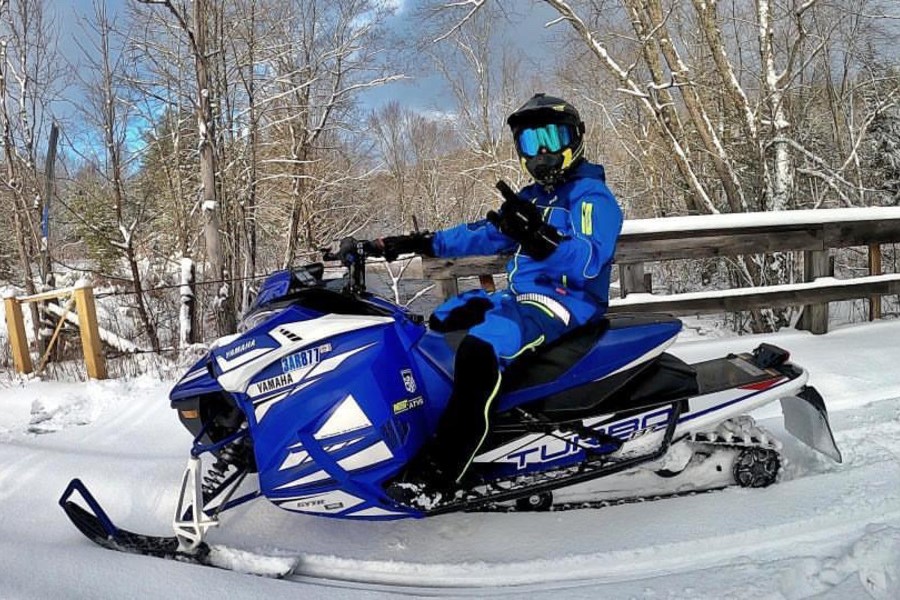Complete Snowmobile Maintenance Checklist for Peak Performance
Snowmobiling is all about freedom — gliding through powder, exploring trails, and enjoying the winter rush. But to make sure every ride feels as good as the first, your sled needs regular attention. A proper snowmobile maintenance checklist not only keeps you safe but also saves money by preventing costly repairs. Whether you’re prepping for the first ride of the season or storing your machine for the summer, this guide covers everything you need to know about snowmobile maintenance, including clutch care, track inspection, and more.

Why Snowmobile Maintenance Matters
Your snowmobile’s performance depends on consistent upkeep. A neglected sled can suffer from poor fuel efficiency, worn parts, or even engine failure — all of which can turn a fun day on the trail into an expensive headache.
Routine snowmobile maintenance helps to:
-
Extend engine life and prevent breakdowns.
-
Keep handling smooth and responsive.
-
Improve fuel economy.
-
Ensure maximum safety in remote or cold environments.
Think of it like this: a few hours of maintenance now can save days of frustration later.
Pre-Season Snowmobile Maintenance
Before the first snow falls, take time to inspect your sled thoroughly. This is the best time to catch small issues that could turn into major problems once you’re miles from the trailer.
Your pre-season snowmobile maintenance checklist should include:
-
Inspect and replace spark plugs.
Remove old plugs, check for fouling or corrosion, and replace them if necessary. A fresh set improves ignition and fuel efficiency. -
Check fuel and oil systems.
Drain any old fuel, as stale gas can cause performance issues. Refill with fresh fuel and check your oil reservoir for proper levels. Make sure to use high-quality 2-stroke or 4-stroke oil recommended by your manufacturer. -
Examine the drive belt.
Look for cracks, glazing, or uneven wear. If it’s worn out, replace it before your first ride — a broken belt on the trail is never fun. -
Inspect the track.
Snowmobile track maintenance is essential for traction and control. Rotate the track manually to check for missing lugs, cracks, or frayed edges. Make sure it’s properly tensioned — not too tight or too loose. -
Check the skis and carbides.
Make sure the skis are aligned evenly and that the carbides are sharp. Dull carbides reduce steering precision, especially on icy trails. -
Battery and electrical system.
Charge the battery and inspect all wiring for corrosion or loose connections. Test the headlights, taillights, and kill switch. -
Lubricate all moving parts.
Apply grease to suspension points, steering components, and other pivot areas. Proper lubrication reduces wear and keeps movement smooth.
A complete pre-season snowmobile maintenance check ensures your sled is ready to perform reliably from day one.
Snowmobile Clutch Maintenance
Your clutch system is the heart of your sled’s performance. Without proper snowmobile clutch maintenance, you’ll experience sluggish acceleration, belt slippage, or uneven power transfer.
Here’s how to keep it in top shape:
-
Clean the clutches regularly using a mild solvent or clutch cleaner — avoid harsh abrasives.
-
Inspect weights and springs for wear or rust. Replace if any parts are weak or misshapen.
-
Check sheave alignment to make sure both primary and secondary clutches are parallel. Misalignment can cause belt wear and vibration.
-
Avoid contamination: Never touch clutch surfaces with oily hands — grease can cause belt slippage.
Well-maintained clutches make acceleration snappier, improve fuel efficiency, and extend the life of your drive belt.
Snowmobile Track Maintenance
Your snowmobile’s track connects all that engine power to the snow. Neglecting snowmobile track maintenance can lead to traction loss or even damage that sidelines your sled.
Follow these key steps:
-
Inspect regularly: look for missing lugs, cracks, or torn sections.
-
Adjust track tension: too loose and it can skip; too tight and it strains the bearings.
-
Check track alignment: a misaligned track causes uneven wear and poor handling.
-
Keep it clean: after each ride, remove ice and debris that can freeze between lugs.
For frequent riders, checking your track every few rides is a good habit — it ensures your sled stays stable and responsive.
Snowmobile Trail Maintenance
While not directly about your sled, snowmobile trail maintenance matters just as much for your riding experience. Well-groomed trails reduce stress on suspension and steering systems. Support local snowmobile clubs that groom trails, mark hazards, and maintain routes. In many areas, trail fees help fund grooming equipment — keeping your rides smooth, safe, and enjoyable.
During-the-Season Maintenance
Even after your pre-season inspection, yearly snowmobile maintenance should continue throughout winter. Regular mid-season checks keep performance consistent and help you spot wear before it worsens.
Mid-season checklist:
-
Inspect track tension and suspension weekly.
-
Clean the clutches every few rides.
-
Check fluid levels, especially chaincase oil.
-
Tighten loose bolts and nuts after long or rough rides.
-
Clean the sled after every trip to prevent corrosion from salt or slush.
These quick checks between rides are simple but essential for preventing mid-season breakdowns.
End of Season Snowmobile Maintenance
Once the snow melts, don’t just park your sled in the corner of the garage. Proper end of season snowmobile maintenance protects it during storage and makes pre-season prep next year much easier.
Here’s how to do it right:
-
Wash and dry the sled thoroughly.
Remove dirt, salt, and moisture that can cause rust. Let it dry completely before storage. -
Stabilize the fuel.
Add fuel stabilizer and run the engine for a few minutes to circulate it. This prevents the gas from breaking down over the summer. -
Change fluids.
Replace chaincase oil and drain carburetors if your model requires it. -
Lubricate all components.
Grease the suspension, steering, and pivot points to protect from corrosion. -
Loosen track tension.
This prevents flat spots on the track while it’s stored. -
Store properly.
Keep your sled in a dry, covered space away from direct sunlight. Consider using a breathable snowmobile cover to prevent condensation buildup.
When next winter arrives, you’ll thank yourself for taking the time to prepare your machine properly
Snowmobile Maintenance Cost
The snowmobile maintenance cost depends on how often you ride and how well you care for your sled. On average:
-
Basic maintenance like oil, spark plugs, and belt checks may cost around $100–$200 per season if you do it yourself.
-
Professional servicing, including clutch balancing and deep cleaning, can range from $300–$600 annually.
-
Major repairs, such as track replacement or engine work, can exceed $1,000.
Regular upkeep keeps costs predictable and avoids expensive surprises. Preventative maintenance is always cheaper than emergency repairs.
Final Thoughts
Proper snowmobile maintenance isn’t just about keeping your machine running — it’s about making every ride safe, efficient, and fun. Whether you’re tackling deep powder or cruising groomed trails, regular checks on your clutch, track, fluids, and suspension will keep you moving confidently all winter long.
Think of maintenance as part of the adventure. A well-cared-for sled delivers more miles, more memories, and far fewer headaches. So grab your checklist, roll up your sleeves, and get your snowmobile ready to conquer the snow season after season.







